In my last three posts, I’ve introduced the sharing vs sparing argument, given the context for the Green Revolution that set off the last 65 years of agricultural innovation and transformation, and the fundamental problems that agriculture causes itself. They are here:
1. Intro to Sharing vs Sparing
2. The Miracle and Terror of Modern Ag, Pt 1. On the genius and myopia of Norm Borlaug and the green revolution.
3. The Miracle and Terror of Modern Ag, Pt. 2: Why the fundamental problems of agriculture today are the same as the problems of agriculture 6000 years ago.
I have purposely avoided the political, the socioeconomic, the cultural, and the geographic, to break down ag to the most fundamental resources that it relies on and consumes. What I’ve left out so far is important, but not as universal as the following:
1. Agriculture needs soil and water.
2. Soil and water are maintained by ecosystems, which function via biodiversity.
3. Agriculture (as most people think of it) displaces ecosystems, destroys biodiversity, and degrades soil and water resources over time.
4. Thus, agriculture, in the long-run is an inherently autodestructive process; it needs soil and water, and it consumes soil and water, both directly, and by destroying the ecosystem processes and biodiversity that maintain soil and water.
These 4 concepts transcend culture, geography, nationality, religion, and politics. And it’s important to understand that before we start to integrate the messier interconnectedness of all those dynamics, human society, and our total reliance on nature and its cycles.
With that pattern established, it’s time to return to the biggest question our generation faces, and the basic question the sharing vs sparing argument revolves around: How do we feed the world without destroying the planet?
The sparing argument relies on intensification and efficiency, and the idea that through growing more food per acre, we can spare more land for nature. This argument has three major weaknesses: Jevon’s Paradox, externalities, and effects over time. Taking them one at a time:
1. Jevon’s Paradox is the counterintuitive pattern that as efficiency of a particular resource use goes up, aggregate demand for that resource increases. Electricity is a great example — compared to 50 years ago, our production of electricity is significantly more efficient and significantly less costly. As efficiency improves, the profitability to producers also increases, incentivizing other electricity producers to get involved. Consumers of electricity, now that it is cheaper, discover new uses and substitute it for more costly alternatives. Because efficiency of electricity production is magnitudes higher, demand for electricity is also magnitudes higher. Thus, greater efficiency has led to massive increases in demand, leading to much higher usage of electricity in aggregate. In other words, per-unit increases in efficiency lead to much higher demand as well as greater aggregate impact.
Agriculture and land use follow this pattern, though with a unique twist. Our demand for food has a natural ceiling, and that ceiling is population. Greater agricultural efficiency doesn’t just increase aggregate demand through finding new uses (as efficiency gains in other markets do), but actually enables populations to grow—thus raising the ceiling of what total demand can be. The substitution factor is still there, but the dynamic of physically enabling greater populations is unique to food systems.
Now, I can hear you saying, because you are totally up to date on this stuff, “but Neal the US Corn Grower’s Association is growing more corn on less land than a century ago!” and you are completely right. The USA had 94.1 million acres of corn in 2023 (see, for instance, the article here) compared to 100 million acres in the 1920s, yet is producing six times the amount of corn this century compared to last. How do we square that circle with Jevon’s Paradox?
For one, we can zoom out. The history of agricultural technology is one of ever increasing efficiency, with that efficiency lowering cost of food, and enabling populations to expand. As efficiency increases, productivity goes up, food gets cheaper, demand goes up, and more land is converted. Never in history has greater agricultural efficiency led to less land use. From the first agricultures between 4000 and 6000 BC, to today, more land under use always follows greater efficiency of land use. Less land use has always been a result of other factors.

Only two things, historically, have ever led to lower aggregate land use. The first is population decline, with war, famine, and disease as the primary causes. The second is the various ways land becomes unusable: Aquifer depletion, soil erosion, drought, desertification, flood, etc (these are often caused by farming!) For instance, in the USA since the 1980s, 30 million acres of farmland have been abandoned, as reported by AgDaily in July, 2024:
The study identified several regions with significant cropland abandonment. The Ogallala Aquifer region, spanning parts of Colorado, Kansas, Nebraska, New Mexico, Oklahoma, South Dakota, Texas, and Wyoming, saw substantial land abandonment due to groundwater depletion from excessive pumping and droughts. Other notable areas of abandonment included Mississippi, the Atlantic Coast, North Dakota, northern Montana, and eastern Washington State.
The fate of the abandoned cropland varied:
Grassland and Pasture: About 53% of the abandoned cropland transitioned to grassland and pasture.
Shrubland and Forest: 18.6% became shrubland and forest.
Wetlands: 8.4% converted to wetlands.
Non-vegetated Lands: 4.6% became non-vegetated lands.
Recultivated or Unclassified: The rest was either recultivated or could not be classified.
The article also notes that the vast majority of this land was not put into conservation or NRCS programs, but simply abandoned. If you’ve read my previous posts, this should ring a bell:
Farmers abandon their farms when their farms no longer produce, but otherwise they tend to hang on as long as they can. In my experience, Farmers are very smart, even more stubborn, and are attached to land in ways non-farmers are not. Abandoning a farm is a deeply psychologically difficult event, one that drives instability, insecurity, and massive trauma to a family. I witnessed this in rural Guatemala in 2001, when I was living in the town of Teculután. A farming family I knew had their corn crop fail, and they made the very difficult decision of abandonding their farm to go live in Guatemala City. I witnessed the heartbreak, the fear, and the instability of how this family would get by, and it was one of the events that drove my passion for food systems and sustainability. This rural to urban pattern is a global one, and a driver of problems related to crime, poverty, and instability.
In general, farmed land only becomes not-farmed land due to some kind of trauma, whether geographic, economic, or military. Note that about 78% of the abandoned lands mentioned in the article above went through a process of recovery and became grasslands or forests or wetlands (as shown in the cycle), but about 22% either became totally desertified (“non-vegetated land”) or put immediately back into exploitation of some kind.
So does more corn on less land in the USA prove Jevon’s Paradox wrong? No, and this is why: First, in aggregate there’s a lot more land in corn globally despite massive gains in efficiency. Second, the less land in corn in the USA isn’t because of greater corn efficiency, but because of land becoming so degraded that it can’t grow corn anymore, or because whoever managed that land has shifted cropping systems.
There is no land being spared due to efficiency — the only land being spared is land that was abandoned and began recovery, or land that was legally set apart so agriculture couldn’t be practiced, like state and national parks. This is further reinforced by the ethanol subsidy I pointed out in a previous post—if efficiency actually led to land sparing, and if Jevon’s Paradox weren’t applicable to ag, then we wouldn’t have decided to use corn to produce biofuels on 36 million acres in the US. Instead, there would be 36 million more acres of wilderness and conservation, because we would only be growing corn for food instead of food and fodder and fuel now. The cheapness of corn enabled us to substitute corn for fuel and sugar—which is exactly the kind of adaptation that Jevon’s Paradox predicts. In other words, what we’re seeing as a whole is evidence of Jevon’s Paradox playing out, rather than a refutation of it.
After Jevon’s Paradox the next factor against the sparing argument is externalities. I already wrote extensively on what these externalities are in The Miracle and Terror of Modern Ag Part 2, and how the practice of agriculture degrades agriculture’s resource base, in particular soil and water. There are two things I want to add here.
First, it is insane that we treat water, soil, and biodiversity as externalities, given their foundational nature to human society. Only a profoundly myopic, head-in-the-sand society could ever consider the foundations of life as externalities! That modern day society treats these resources, which are essential, indispensable, and intrinsic to all human life, and every human civilization, as externalities, is a dire indictment of modern cultures, economics, and financial systems. We are repeating mistakes of past civilizations at a scale past civilizations never reached, inflating a civilizational bubble that will inevitably pop without significant changes made to how we interact with these foundational aspects of life.
Second, the externalities of modern ag aren’t only felt on-farm and in agricultural landscapes, but permeate and affect “spared” areas that are nominally put into conservation or reserved for other purposes. This is most apparent in water and water cycles, and a couple examples will illustrate the point.
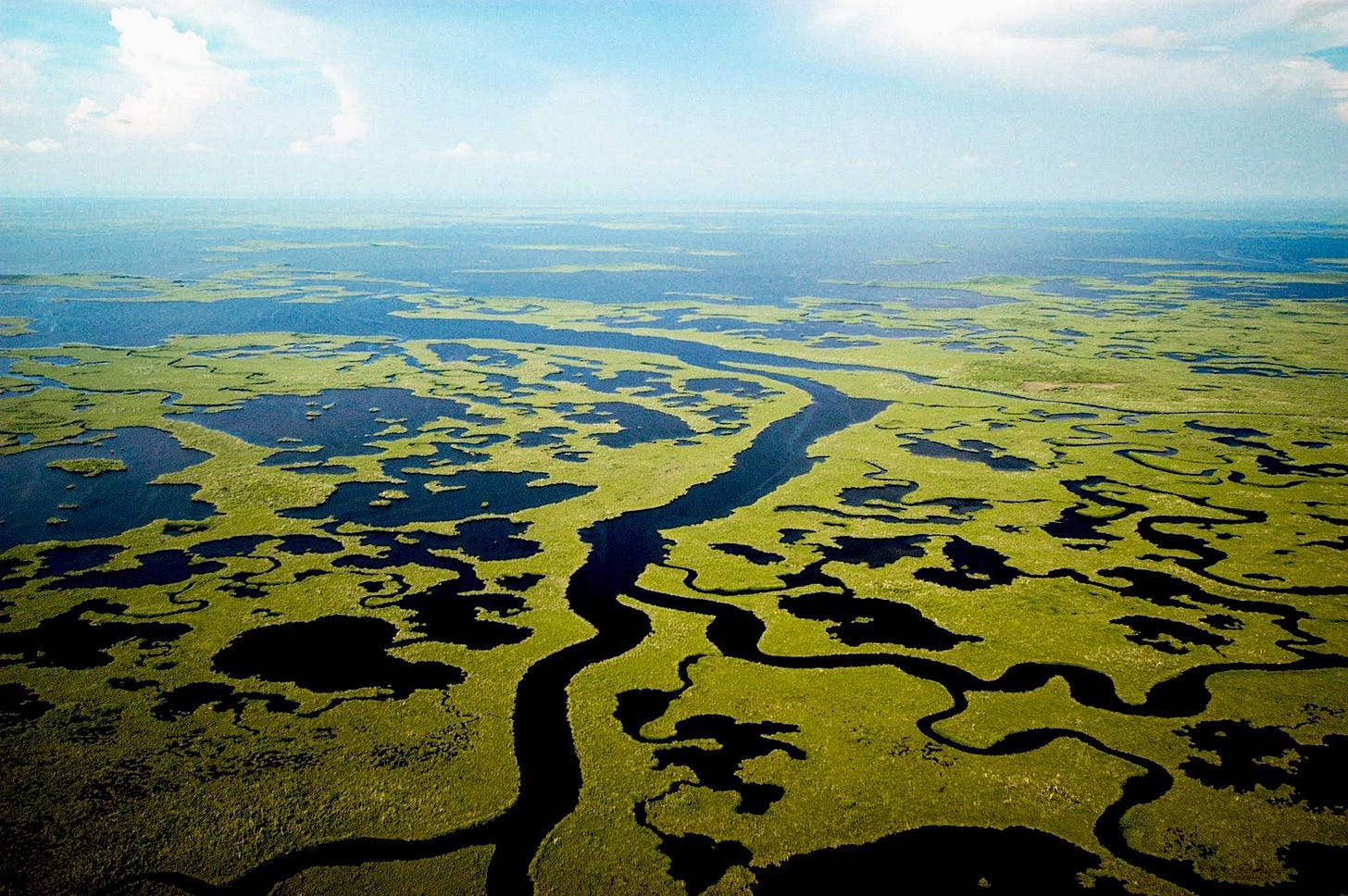
The Everglades in Florida are a famous wetland system that once covered 3,000,000 acres, and were coined the “River of Grass”. Sugar farming in Florida has directly displaced some 700,000 acres. The externalities of those 700,000 acres of monocropped sugar affect the rest of the Everglades in numerous ways, but i’ll just mention 2:
Nutrient pollution: Sugar farming involves fertilizer use that leads to phosphorus and nitrogen runoff. The Everglades evolved as a nutrient-poor ecosystem, so this nutrient enrichment causes:
Overgrowth of cattails that replace native sawgrass
Disruption of microbial communities
Altered food webs and habitat structures, significantly disrupting the ecological health of the Everglades.
Extensive drainage and water control systems have significantly altered the natural hydrology that historically sustained the Everglades. The water management system created for flood control and water supply includes:
About 2,000 miles of canals
71 major pumping stations
More than 2,000 water control structures
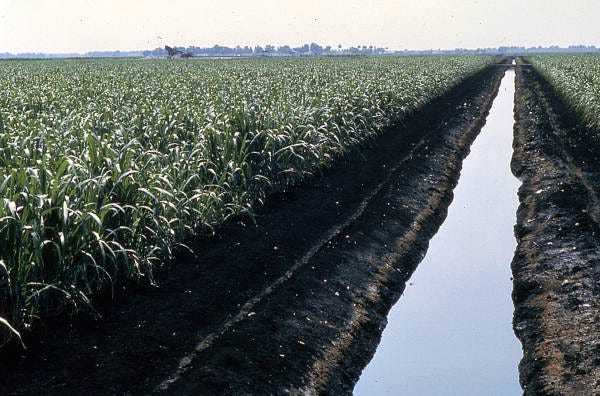
A sugar cane field in Clewiston, FL. Fields like this divert enormous amounts of water away from the Everglades, highly pollute the runoff, and then are drained into Lake Okeechobee from which toxic cyanobacteria blooms cause tens of millions of dollars of damage every year. Source: Floridamemory.com
These systems have fundamentally altered water timing, distribution, quality, and quantity throughout the Everglades. The natural sheet flow has been compartmentalized, with water often diverted east and west to the Atlantic Ocean and Gulf of Mexico rather than flowing south through the Everglades.
Fundamentally, what this means is that even though sugar removed 700,000 acres of wetlands in the northern areas of the Everglades, another 800,000 acres have been degraded or destroyed due to disrupted hydrology and agriculture-related development, as only 1.5 million acres of the original 3 million remain, and these 1.5 million acres of Everglades are neither intact, nor unaffected. They are not “spared land”, despite being National Park, but significantly disrupted.
Of course, the most famous externalities of sugar in Florida are the algae blooms, which form in lakes and then drain to the coastlines, causing tens of millions of dollars in damage in the form of tourism, and dead zones in riparian areas like estuaries and deltas. These affects are large you can track the size of the algae bloom in Lake Okeechobee, in real time, via Satellite!
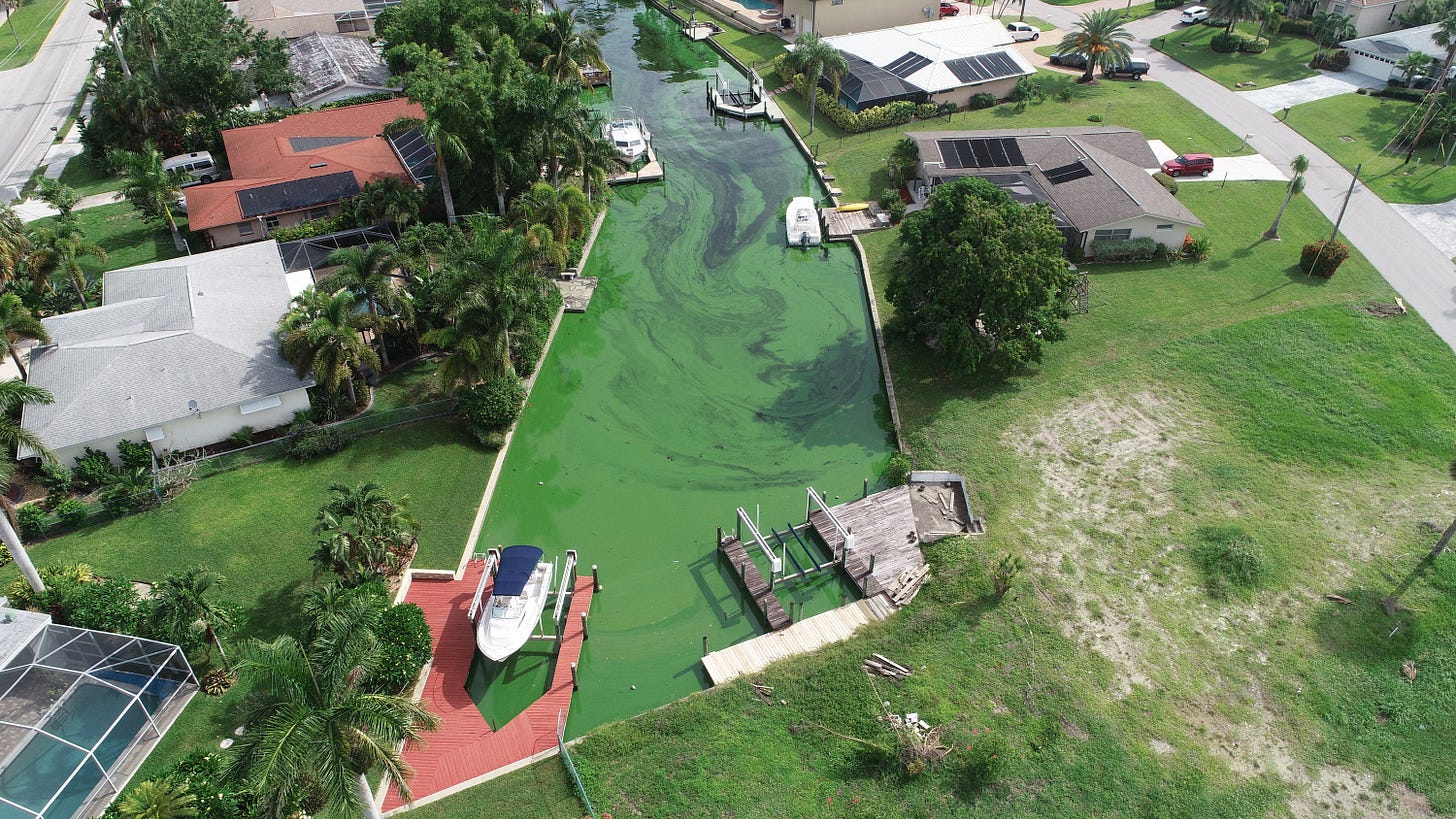
The argument that more efficient agriculture leads to more land sparing ignores externalities—not just those of water pollution and disrupted hydrology—but also the “scope 3” aspects of ag—the infrastructure, the mining, the hydrocarbons, and the industrial processes making up a massive supply chain, and the effects those have on nature as well. But what we see from the example of sugar in Florida is that even “spared” land is significantly affected by the highly-efficient systems we’ve developed today.
After Jevon’s Paradox and Externalities, the final nail in the sparing argument’s coffin is effects over time. Jevon’s Paradox shows that greater efficiency leads to more land under management, the externalities of today’s current systems show that “spared land” is actually heavily affected, and not spared at all, and combining those two factors with the cumulative effects over time shows how ridiculous the land sparing argument is.
In the last three installments of this series, we’ve seen how increasing agricultural productivity and the accompanying externalities helped drive Rome into military expansionism, as conquering both reduced the number of mouths to feed and granted the empire access to newly exploitable land. We’ve seen how the invention of flood irrigation in the early Euphrates civilizations led to progressive salinization of the soils (an externality!) and over time caused a collapse and forced city state populations to abandon their lands and seek homes elsewhere (these folks may have been the first “climate refugees” by today’s standards). We’ve seen how the Chinese management of the Yellow River’s aggradation led to catastrophic floods that never would have occurred naturally, because they sought to control the river through levees and dikes for agricultural purposes.
There are numerous other examples: The Salton Sea, the Aral Sea, and the Great Salt Lake are all going through similar processes, causing massive public health problems, and destroying existing industries. Of course the Aral Sea is further along the proces than the Salton Sea, which is further along in the process than the Great Sale Lake, but all three are variations on a theme of mismanaged agricultural water, sedimentation of agricultural runoff, and blowback of ag chemical sediments from messed up hydrology.

Then there’s the water supply issue—The Ogallala Aquifer in the USA, the North China Plain Aquifer, the Upper Ganges Basin, the Arabian Aquifer System, and the Murray-Darling Basin in Australia all face overwithdrawal issues, all have between 5 and 40 years of supply left given current withdrawal rates, and currently feed a cumulative 1 billion people directly (not counting exports, which has messier data)
It's important to note that these are simplified estimates that assume static conditions. In reality:
Depletion is non-linear and accelerates as aquifers thin, so the time left may be a lot less with some of these.
Water quality often deteriorates as aquifers deplete
Some regions are already implementing conservation measures
Climate change and disrupted small-water cycles may further stress these systems through altered precipitation patterns
Technology advancements might improve water use efficiency
So when we look at the effects of increased efficiency, as measured by “productivity per acre”, the effects over time of this efficiency are inherently destructive. We have pushed this productivity per acre to previously unforeseen levels, while degrading the fundamental resources on which that productivity relies. What that means is, production will peak and then decline as water and soil and ecosystem services become degraded. Rather than thinking of this as a sustainable use of land with high productivity over time, it’s more akin to strip mining soil and water, which gives us a temporarily high productivity, but an inevitable decline. In other words, we’re growing our population while compromising that future and bigger population’s ability to produce food. Hence the Yellow River analogy from the last post.
And this brings me to the conclusion of the first half of the series on Sharing vs Sparing, and the question of how we feed the world without destroying the planet. The Green Revolution gave us unprecedented advances in food production and efficiency, enabling population growth beyond what previous generations even considered possible, reducing famine and starvation and world hunger to the point that it is calorically feasible to end world hunger in our generation. That is the miracle of modern ag. But when we look at the cumulative effects over time of the externalities of modern ag, and take Jevon’s Paradox into account, the need to change today’s food systems becomes obvious. The fact is the sparing model of food production is not sparing the natural world, nor is it even sparing the foundational resources of food production (soil and water).
The fundamental failure of treating soil, water, and biodiversity as externalities, rather than as the foundation of all human society, is reflected in the sparing model, and the inevitable consequences of that failure present what I believe is the greatest challenge my generation faces: how to feed the world without destroying the planet. The Sparing model feeds the world through greatly increased efficiency, at least temporarily, while destroying ecosystems, degrading soil, consuming aquifers, deforesting and desertifying, and otherwise degrading land and oceans. Fundamentally, that means efficiency on its own isn’t a solution, and that the sparing model won’t be able to feed the world in the future, as doing so requires healthy soils, maintained water resources, and ecosystem function.





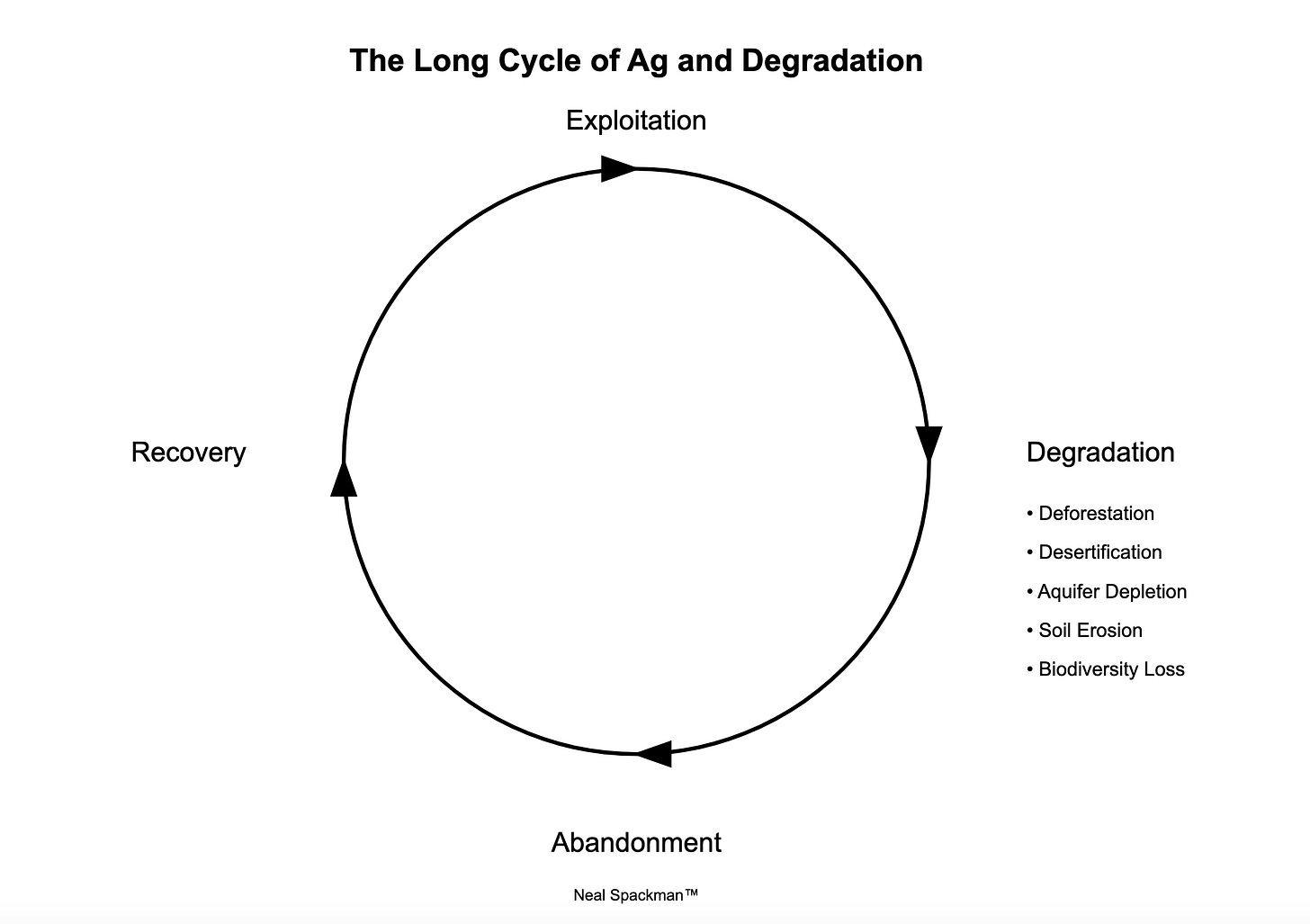
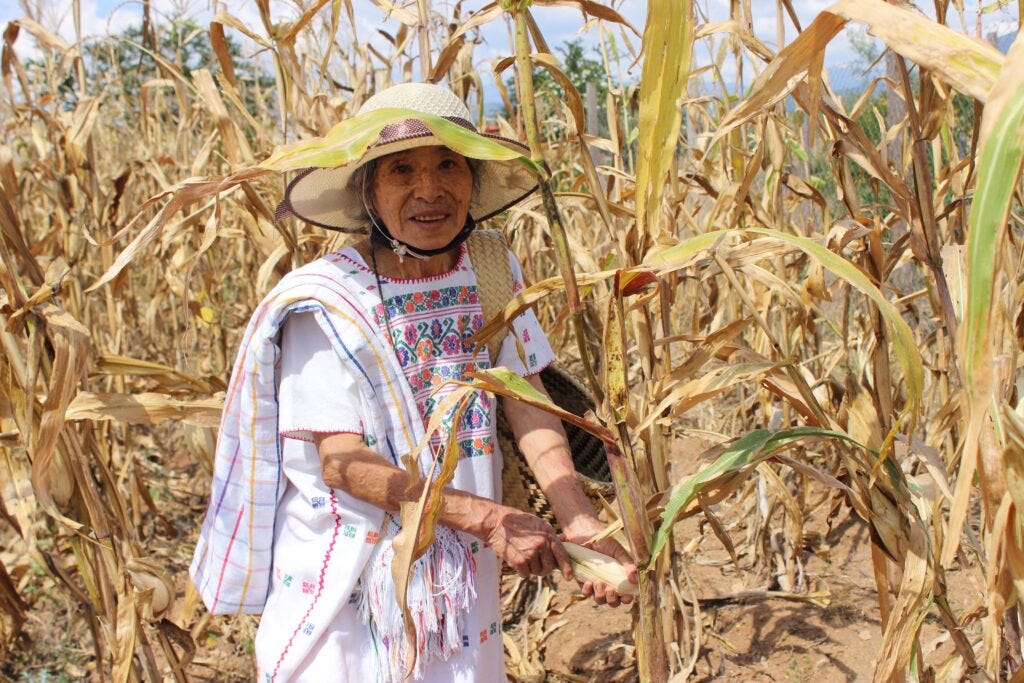

Hi Neal our forestry practices could also be added to the list as on the surface much looks sustainable but a look under the hood shows many of these compounding problems. soil loss, habitat dehydration, habitat de-evolution.
On the solution side I argued about the necessity of multi billion dollar dam projects in our tropical north Australia to then transport water over the great divide mountain range to irrigate some of our monsoonal semi arid northland. My argument was that a slow release levee less than a meter high across such large flat areas could do the same for a fraction of the price . This is being currently trialed with some excellent results , much of this has been discussed on https://bioticregulation.substack.com/ in relation to the biotic pump and how vegetation and land use effect rainfall patterns
Many of our high risk degraded areas could see the same benefits Kenya. Somalia. The Sahal, the mid west USA. I love the video one farmer posted where he used an old tractor with a grading attachment to create a levee less that a foot high to rehabilitate thousands of acres of what were once wetlands in very little time. ironically the initial dam project was called the Hells gate dam.
I think the right scientific research could point to the possibility of the need for a new green belt up the north east coast of Africa to help revitalize the biotic pump in this region and coupled with this type of slow release levee could have a great effect.
Look forward to reading the next posts in the series.
Excellent! I have made similar arguments against the pursuit of livestock efficiency.